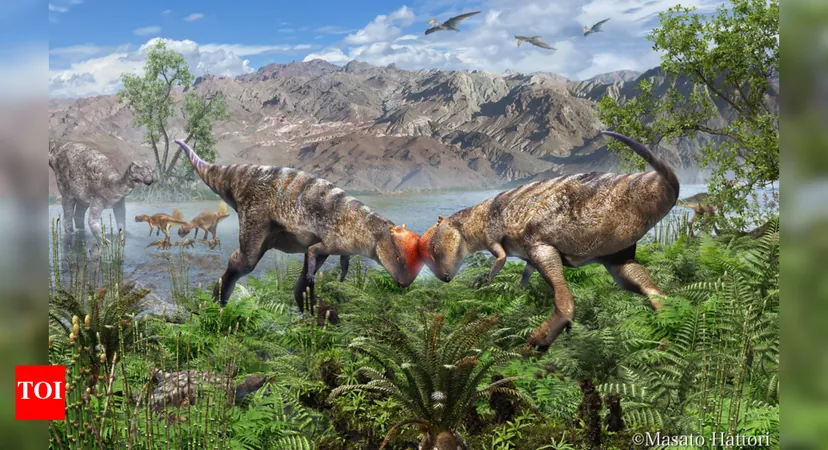
Meet Zavacephale: The 108-Million-Year-Old Dinosaur with a Built-In Helmet!
2025-09-22
Author: Benjamin
A Revolutionary Discovery in the Gobi Desert
Unearthed from the ancient sands of Mongolia's Gobi Desert, the astonishing skeleton of Zavacephale rinpoche has taken the paleontological world by storm! This remarkable juvenile dinosaur, dating back a staggering 108 million years, showcases a strikingly unique single-boned dome—providing unprecedented insights into the evolution and social behaviors of dome-headed dinosaurs.
Why Zavacephale is a Game-Changer
This fossil isn't just any discovery; it's the oldest and most complete pachycephalosaur skeleton ever found! Previous knowledge about these dinosaurs came from fragmented remains, but Zavacephale fills the gaps, shedding light on their growth, behaviors, and even their diet. Researchers have published their groundbreaking findings in the journal Nature.
A Glimpse into the Past
The well-preserved fossil includes not only bones but also gastroliths—stomach stones that were essential for grinding plant matter. This feature allows scientists to peer into Zavacephale's diet and digestive habits. Limb bones show growth rings, much like tree rings, helping experts determine the dinosaur's age and developmental stages.
The Mystery of the Dome
Sporting a dome-shaped skull measuring about a meter long and weighing just under six kilograms, Zavacephale developed its unique skull structure early in life. Unlike later relatives whose domes were made of two bones, Zavacephale's dome was formed by a single bone with small spikes and nodes, hinting at the evolutionary traits that would appear in later species.
Social Dynamics of Dome-Headed Dinosaurs
According to Dr. Lindsay Zanno, a leading researcher at North Carolina State University, the dome likely played a significant role in social interactions, possibly not for defense against predators but for attracting mates. "These dinosaurs were likely using their flashy headgear for showing off and competing for partners," Zanno stated.
An Ecosystem Teeming with Life
The fossil site also revealed remains of other herbivorous dinosaurs and various aquatic creatures, suggesting that Zavacephale thrived in a lush habitat filled with lakes and cliffs. The name 'Zavacephale' combines the Tibetan word for "origin" and the Latin term for "head"—a fitting title for this pioneering dome-headed dinosaur.
A New Era in Paleontology
Before the discovery of Zavacephale, knowledge of dome-headed dinosaurs was largely limited to their iconic skulls. This breakthrough has not only enriched our understanding of their anatomy but also opens a new chapter in the study of dinosaur evolution.
Stay tuned as we continue to uncover the secrets of our planet's prehistoric past!









 Brasil (PT)
Brasil (PT)
 Canada (EN)
Canada (EN)
 Chile (ES)
Chile (ES)
 Česko (CS)
Česko (CS)
 대한민국 (KO)
대한민국 (KO)
 España (ES)
España (ES)
 France (FR)
France (FR)
 Hong Kong (EN)
Hong Kong (EN)
 Italia (IT)
Italia (IT)
 日本 (JA)
日本 (JA)
 Magyarország (HU)
Magyarország (HU)
 Norge (NO)
Norge (NO)
 Polska (PL)
Polska (PL)
 Schweiz (DE)
Schweiz (DE)
 Singapore (EN)
Singapore (EN)
 Sverige (SV)
Sverige (SV)
 Suomi (FI)
Suomi (FI)
 Türkiye (TR)
Türkiye (TR)
 الإمارات العربية المتحدة (AR)
الإمارات العربية المتحدة (AR)